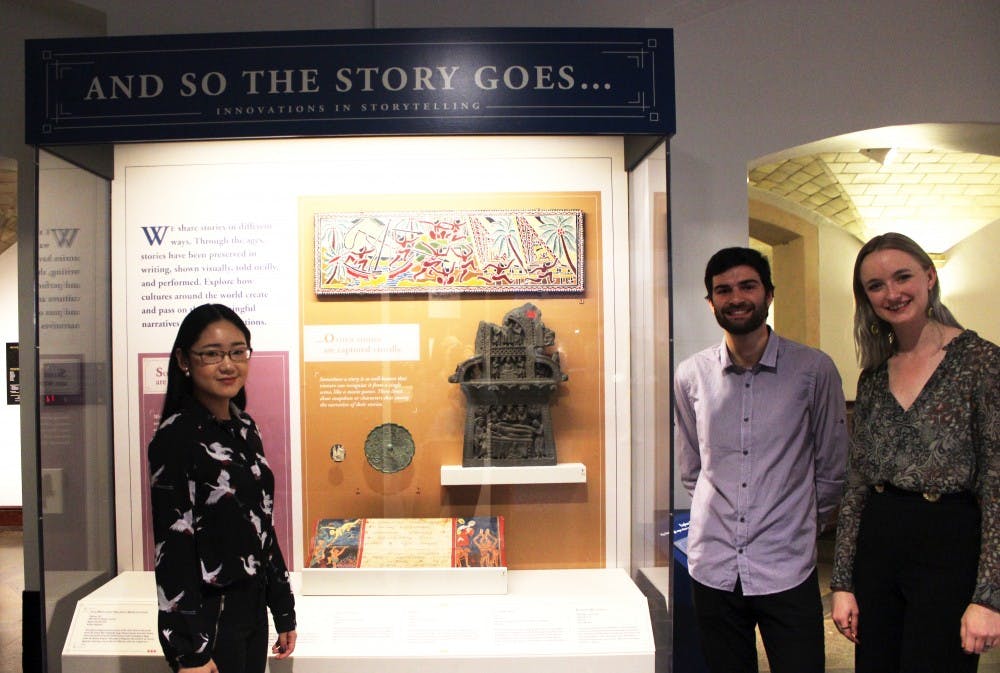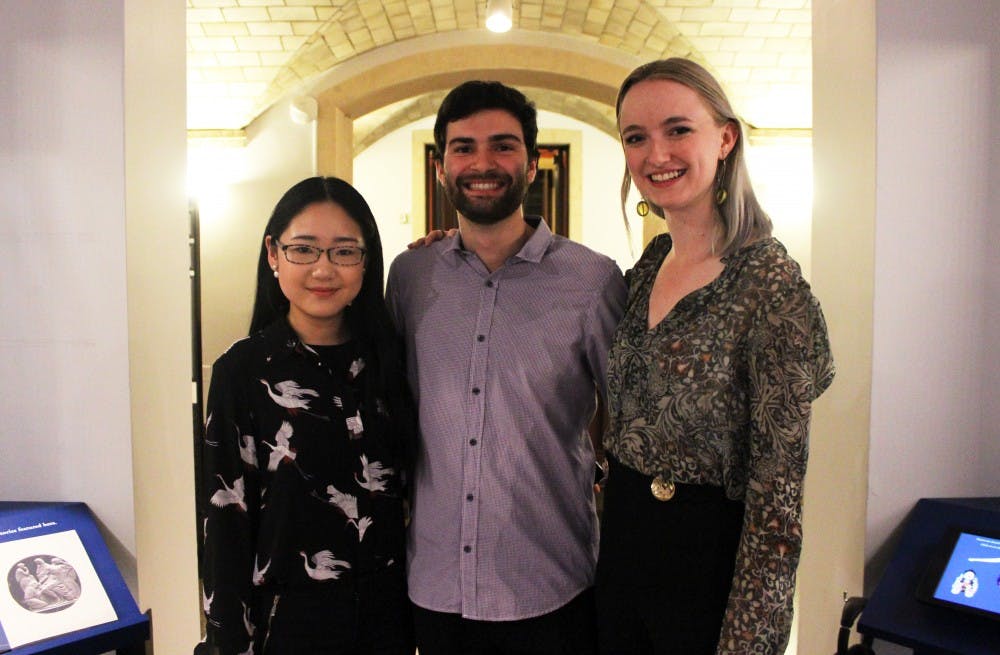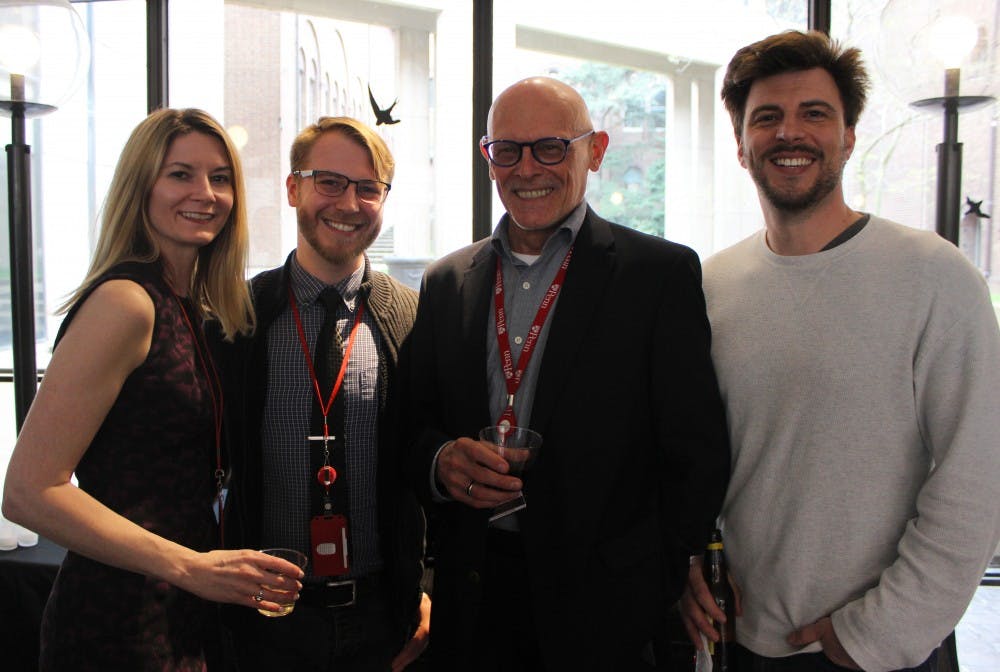
Penn students have curated an exhibit at the Penn Museum highlighting innovations in storytelling across time and cultures.
On April 25, the Penn Museum held the opening for the student exhibition, “And So The Story Goes … Innovations in Storytelling,” in Mosaic Hall. Each year, Penn Museum offers a year-long internship position, in which students create a small exhibition that reflects the Provost’s yearly theme. This is the fourth year of the Penn Student Exhibition internship at the Penn Museum.
Drawing from the Provost’s 2017 Year of Innovation theme, College senior Braden Cordivari, College junior Fiona Jensen-Hitch, and College senior Linda Lin were tasked with creating a public exhibition that included 15 objects.

Initially, the students centered their ideas on the practice of writing. Over time, the student curators shifted the scope to focus on how storytelling has evolved alongside cultural innovations.
Given the range of storytelling, the students were able to encompass a breadth of time periods and cultures.
“Storytelling takes place in many forms, from being preserved in writing to being shown visually and told orally,” Lin said.
The process of curating the exhibit spanned roughly a year. It included conducting research, working with museum professionals to select objects, collaborating with in-house designers and curators, interviewing artists, and developing a narrative storyline.
“For the exhibition, we added an iPad and storybook, where there were synopses for some of the objects to give them context. With the storybook layout, it made it seem as though people were reading a book throughout,” Lin said.
The storybook and iPad sat alongside the 15 Penn Museum artifact objects that the student curators chose. In addition to the objects, the curators included an audiovisual guide, a storytelling format, and a verbal recording of the Iliad.
The objects themselves hailed from a variety of different regions. The exhibition included a Burmese mask, a Japanese shadow puppet, a Thai Buddhist manuscript, and Cochiti Pueblo clay doll, among others.
The Cochiti Pueblo clay doll, named “Storyteller Figure,” held a particular significance in the exhibit: College junior Fiona Jensen-Hitch had recently interviewed the artist, Mary Trujillo, in February.
Depicting the artist’s grandfather telling a story to his small grandchildren perched on his arms and lap, the piece illustrated the importance of oral storytelling in Cochiti Pueblo culture.
“It’s about showing how Trujillo’s family shared stories. She made a lot of storyteller sculptures like [the doll], always in her grandfather’s image,” Jensen-Hitch said. “She had learned oral storytelling from her parents, and her mother-in-law was a very famous Cochiti artist who was known for her storytelling practice.”
Jensen-Hitch said that she planned on writing a longer article about the interview with Trujillo for the Penn Museum magazine.

For many archeological objects, it isn’t always possible for researchers to contact the artists. Penn Museum Associate Curator and Keeper of the Babylonian Collection Philip Jones noted the significance of contacting Trujillo.
“For me, because I work with tablets, where the idea of being able to talk to the creators is impossible, it was getting in touch with the creator of the storytelling figures that I found incredible.”
The 15 objects aptly reflected the breadth of storytelling forms changing with innovation.
“When you think of innovation, you think of innovation and technology. So, I was surprised when I saw the exhibition because it wasn’t what I expected. But, in a way, storytelling is also innovation, in the ways people hand down their stories,” College sophomore YoElena Tkebuchava said.
The Daily Pennsylvanian is an independent, student-run newspaper. Please consider making a donation to support the coverage that shapes the University. Your generosity ensures a future of strong journalism at Penn.
Donate




